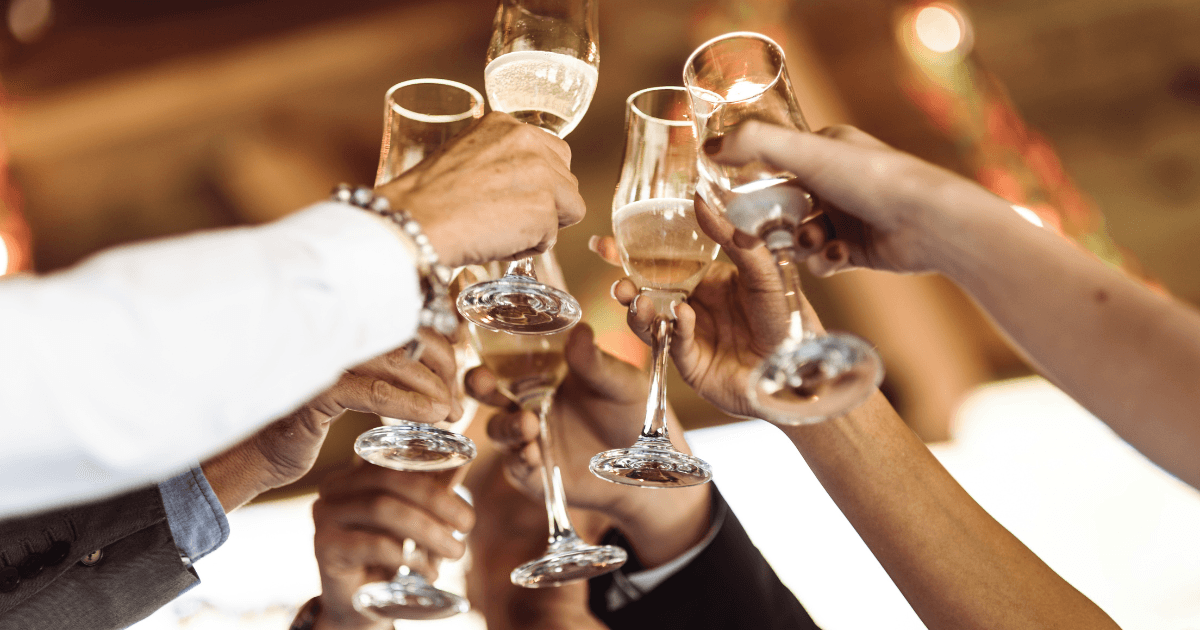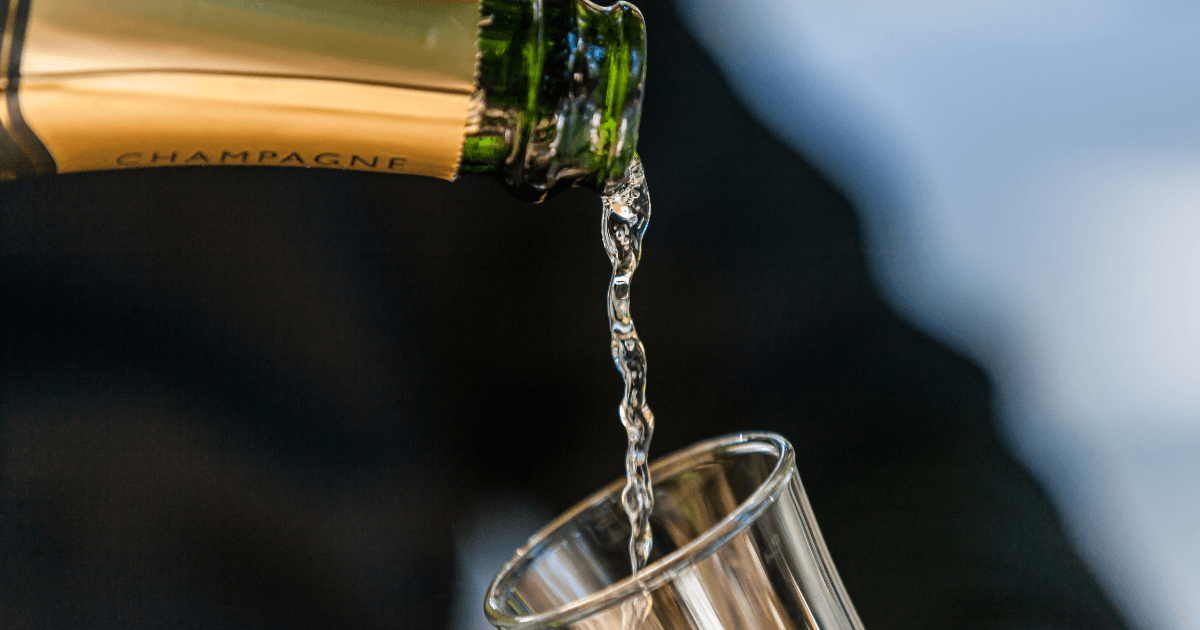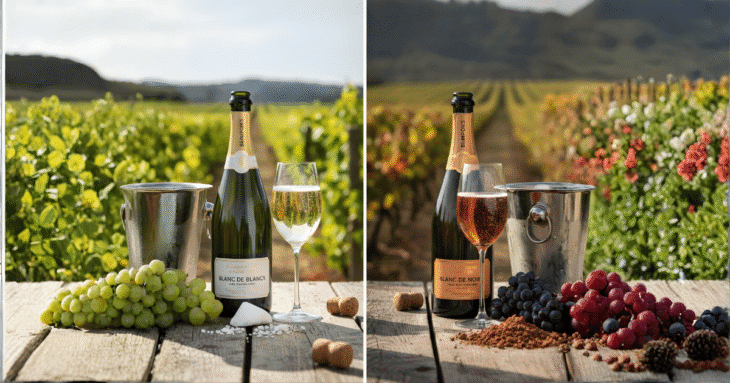Blanc de Blancs vs Blanc de Noirs Champagne: Key Differences
Champagne carries a kind of magic that never feels manufactured, and it has a way of elevating moments that might have otherwise passed quietly. Each bottle holds centuries of craftsmanship, agricultural devotion, and stylistic intention that shape its final personality. Many drinkers know Champagne as a singular luxury, yet its world contains distinct expressions shaped by grape selection. Among these, Blanc de Blancs and Blanc de Noirs stand out as two styles that seem similar at first glance but reveal striking contrasts once explored.
Key Takeaways
- Blanc de Blancs offers citrus-driven freshness that highlights Chardonnay’s natural acidity and mineral clarity.
- Blanc de Noirs delivers richer depth through Pinot-based flavors that feel fuller, warmer, and more textural.
- Grape composition shapes the style by creating either a lean, lifted profile (Blanc de Blancs) or a bold, fruit-forward one (Blanc de Noirs).
- Food pairings depend on the style because Blanc de Blancs suits light, delicate dishes while Blanc de Noirs complements savory and hearty meals.
- Aging potential differs noticeably as Blanc de Blancs evolves toward elegance and Blanc de Noirs deepens into more complex, robust layers.
Defining Blanc de Blancs

Blanc de Blancs is crafted entirely from white grapes, almost always Chardonnay, which naturally produces wines with finesse and bright energy. This variety thrives in Champagne’s cool climate, allowing its structure to build around acidity and clarity. When handled carefully, Chardonnay offers a sense of purity that shines through even the most complex blends. Winemakers often use it to highlight linear precision and a clean, refreshing character.
Regions/villages especially known for Blanc de Blancs
The Côte des Blancs is the heart of Blanc de Blancs production, delivering Chardonnay with purity and minerality. Its villages consistently produce elegant, high-quality fruit that reflects the region’s chalk-rich soil.
- Le Mesnil-sur-Oger – intense minerality and razor-sharp precision
- Avize – balanced aromatics and refined structure
- Cramant – softer texture with vibrant acidity and floral notes
These areas remain some of the most sought-after sources for terroir-driven Blanc de Blancs Champagne.
Typical flavour profile and body
Blanc de Blancs is known for its light structure, bright acidity, and clean, focused aromatics. It often shows crisp fruit notes that evolve into richer layers as the wine ages.
- Citrus and green fruits – lemon zest, green apple, pear
Mineral and floral tones – chalk, white flowers, wet stone - With age – brioche, toasted nuts, softer creaminess
The style works beautifully both as a fresh, youthful Champagne and as an elegant, age-worthy bottle.
Aging potential and style variations
Non-vintage Blanc de Blancs is crafted for freshness and early drinking, offering crispness and vibrancy that suit celebratory moments. Vintage Blanc de Blancs, however, is often more layered and structured due to longer aging and heightened complexity. These bottles can develop nutty, creamy, and toasty nuances with time. Collectors often gravitate toward them because of their graceful evolution.
Defining Blanc de Noirs

Blanc de Noirs is made exclusively from dark-skinned grapes such as Pinot Noir and Pinot Meunier, both of which contribute depth and power. These grapes are pressed with precision to avoid transferring color from the skins, creating a white wine with a bold foundation. As a result, Blanc de Noirs shows an entirely different expression from its Blanc de Blancs counterpart. It feels more concentrated, with flavor resting on richness rather than delicacy.
Regions/villages especially known for Blanc de Noirs
The Montagne de Reims is the key region for Blanc de Noirs, producing Pinot Noir with strength, ripeness, and depth. Its sun-exposed slopes help create grapes with natural weight and structure, resulting in richer, more expressive wines.
- Verzenay – structured, powerful Pinot Noir
- Bouzy – ripe, generous fruit with bold character
- Ambonnay – complex, full-bodied expressions with excellent aging potential
These villages consistently deliver the depth and intensity that define high-quality Blanc de Noirs Champagne.
Typical flavour profile and body
Blanc de Noirs delivers a richer, fuller style with bold fruit and a warm, textured palate. It often feels broader and more powerful than Blanc de Blancs.
- Red fruit notes such as cherry, raspberry, and redcurrant
- Stone fruit depth including plum and baked orchard fruit
- Fuller body with a round, weighty mid-palate
- Subtle spice tones that appear in warmer-growing areas
The overall impression is generous, expressive, and deeply flavorful.
Aging potential and style variations
Blanc de Noirs ages beautifully because its structure supports slow and steady development. Over time, flavors may shift toward savory notes that echo mushroom, truffle, or earthy richness. Vintage versions can become impressively complex, offering layers reminiscent of fine Burgundy. This makes them ideal for drinkers who enjoy evolution and depth in sparkling wine.
Side-by-Side Comparison: Blanc de Blancs vs Blanc de Noirs
| Feature | Blanc de Blancs | Blanc de Noirs |
| Grape Composition | 100% white grapes (Chardonnay) | 100% black grapes (Pinot Noir/Meunier) |
| Body | Light and crisp | Full and rich |
| Aromatics | Citrus, green fruit, floral, mineral | Red fruit, stone fruit, subtle spice |
| Texture | Fine and linear | Rounder and more textural |
| Aging Potential | Long aging for vintage bottles | Long aging with deepening richness |
| Best Pairings | Seafood, oysters, sushi, fresh dishes | Roasted meats, mushroom dishes, aged cheese |
Grape composition: white vs black grapes
The grape varieties alone create dramatically different outcomes in aroma, texture, and structure. Blanc de Blancs leans into refinement and lift, while Blanc de Noirs embraces power and fullness. Both styles reflect the strengths of their respective grapes. Their contrast helps highlight the diversity within Champagne.
Visual appearance, colour notes and bubbles
Both wines appear white in the glass, yet Blanc de Noirs may show a slightly deeper gold tone. This subtle difference stems from nuanced pigment transfer during pressing. The bubbles in Blanc de Blancs often feel tighter and finer because of its high acidity. Blanc de Noirs may show a softer, more generous mousse.
Aromatic and taste differences – fruit, mineral, body, texture
Blanc de Blancs typically emphasizes citrus brightness and mineral clarity, while Blanc de Noirs focuses on red fruit depth. The contrast creates distinct sensory experiences across aroma and palate. One style brings sharp definition, and the other introduces warmth and roundness. Each reveals its personality from the first sip.
Structure, acidity, body and aging behaviour
Blanc de Blancs shows crisp acidity and angular structure that evolves into softness with time. Blanc de Noirs demonstrates broader shoulders, offering richness early and deepening with age. Both styles reward patience, though they mature in unique ways. This makes them appealing to different types of collectors.
Food-pairing and service occasions
Blanc de Blancs thrives with seafood, sushi, and fresh dishes that complement its crispness. Blanc de Noirs pairs well with richer meals such as roasted poultry or earthy mushroom dishes. Each style enhances the food it accompanies by highlighting different characteristics. This flexibility makes them ideal for diverse dining experiences.
How to Choose Between Them

Identify Your Flavor Preferences
Selecting between the two styles starts with understanding what you naturally gravitate toward. Choose Blanc de Blancs if you enjoy crisp acidity, citrus-driven freshness, and a lighter body. Go for Blanc de Noirs if you prefer richer textures, deeper fruit flavors, and a more generous mouthfeel. Your personal taste is the most reliable guide.
Match the Champagne to the Moment
Different occasions call for different expressions of Champagne. Blanc de Blancs shines as an aperitif or alongside delicate dishes like seafood and salads. Blanc de Noirs is better suited for richer meals such as roasted meats, mushroom dishes, or savory entrées. Pairing with intention brings out the best in both the wine and the food.
Decode the Label With Confidence
Champagne labels offer key details that help you anticipate the style. Look for terms like Blanc de Blancs, Blanc de Noirs, vintage, non-vintage, or dosage indicators such as brut, extra brut, or brut nature. Understanding these markers makes choosing the right bottle easier and ensures you know exactly what to expect.
Serving & Storage Tips

Ideal Serving Temperature and Glassware
Serving Champagne a little cooler than white wine preserves freshness while allowing aromatics to unfold. Aim for 45 to 50°F for most bottles. Use tulip-shaped glassware rather than flutes to give aromas room to expand and to experience more texture and nuance in each sip.
How to Open or Decant Sparkling Correctly
Opening sparkling wine requires control rather than force. Hold the cork firmly, twist the bottle slowly, and let the cork ease out with a soft sigh instead of a burst. Decanting is optional but can benefit older or vintage Champagnes by releasing deeper aromatics and softening any bottle-aged tension.
Storage Fundamentals
Non-vintage Champagne is best enjoyed within a few years, retaining its intended freshness and balance. Vintage bottles can develop beautifully and may rest for 10 years or more if kept properly. Store all Champagne in a cool, dark place, laid horizontally to keep the cork moist and ensure longevity.
Choosing the Right Champagne for Your Occasion
Blanc de Blancs and Blanc de Noirs each bring something distinct to the glass, shaped by grape selection, terroir, and the vision of the producer. Blanc de Blancs highlights purity, lift, and mineral-driven finesse, while Blanc de Noirs offers richness, depth, and warm fruit-driven complexity.
Understanding these contrasts helps you choose the perfect bottle for your celebration, your meal, or your curiosity as you explore new cuvées. Whatever style you prefer, both reveal just how expressive Champagne can be, and at California Champagne Sabers, we hope every bottle you open becomes a moment worth remembering.
